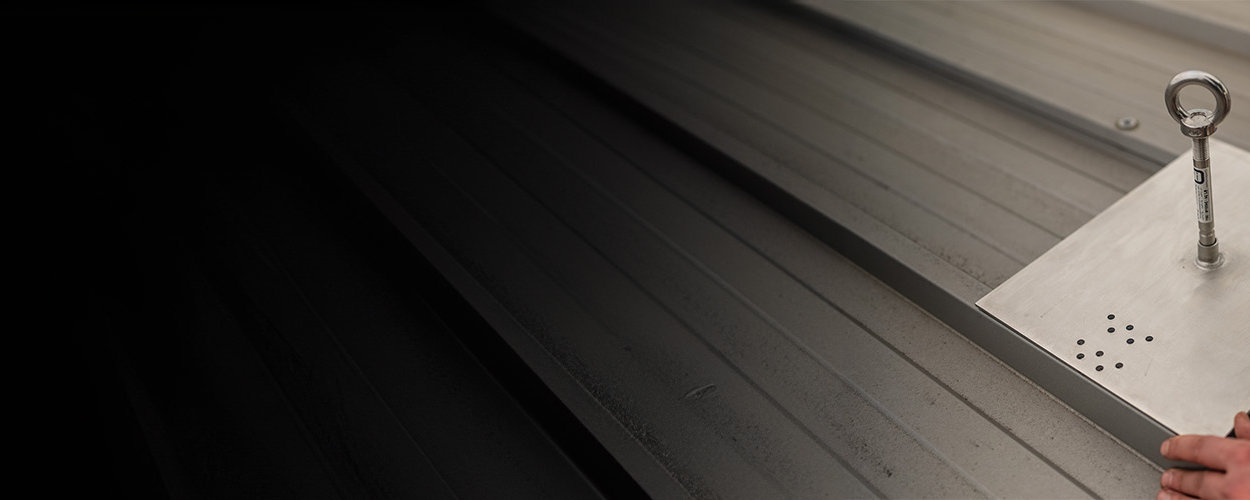What is collective protection
Collective protection and individual protection represent two fundamentally different approaches to protecting people from potential hazards, especially in work-related environments. While individual protection focuses on the personal protective equipment (PPE) worn by individual workers, collective protection aims to eliminate or at least greatly reduce a hazard for everyone in a particular area.
The core idea of collective protection is that the safety measures should protect not just one individual, but everyone present in a hazardous area. This means that no individual customisation or equipment is required to ensure protection. Typical applications of collective protection include measures such as guardrails, safety nets, barriers, scaffolding or side guards installed in areas where there is a risk of falling, such as roofs, bridges, stairs or large machines.
According to the Technical Rules for Operational Safety (TRBS 2121), collective hazard protection is favoured over individual hazard protection where possible. This is because collective protection is not only more effective, but also more practical, as it is less dependent on human behaviour or individual action. Overall, collective protection promotes a safer working environment by reducing the potential risks for all parties involved without limiting worker productivity or flexibility.
Laws, regulations and standards for fall protection on roofs
In Germany, various laws, ordinances and standards regulate the requirements for fall protection on roofs.
The most important of these include the Occupational Health and Safety Act (ArbSchG) and the Occupational Health and Safety Ordinance (ArbSchV), which contain general requirements for occupational health and safety.
More specific provisions are contained in the Construction Labour Ordinance (BauAV) and the Workplace Ordinance (ArbStV), which regulate health and safety on construction sites and workplaces.
Standards such as DIN EN 13374, DIN EN ISO 14122-3 and DIN 4426 specify detailed requirements and test procedures for temporary and permanent fall protection systems.
In view of the variety of regulations, it is advisable to seek advice from experts and always take the latest versions of the regulations into account.
Collective protection can be categorised as primary fall protection
Collective protection measures can also be categorised as primary fall protection measures. Collective fall protection measures prevent people from falling. Secondary fall protection measures cushion the fall and prevent the dangerous impact on the ground.
Areas of application of collective protection
Collective protection is used in a variety of areas to protect people from falls. Here are a few examples:
Flat roofs: Collective fall protection systems such as railings, parapets or nets prevent people from falling from roofs with a slope of up to 20 degrees.
Machines: Protective enclosures, interlocks and safety devices on machines protect people from entering dangerous machine areas or being hit by moving parts.
Skylight domes and continuous rooflights: Railings or covers around skylight domes and continuous rooflights prevent people from falling through.
Escape routes: Railings or walkways on flat roofs enable safe escape in the event of fire or other emergencies.
Fixed ladders: Side protection on fixed ladders prevents people from slipping or falling when stepping from the roof onto the ladder.
In practice, various collective protection measures can be combined to ensure comprehensive protection. For example, a flat roof can be secured with a guardrail and an additional safety net.
Advantages and disadvantages of collective protection
Advantages
- All-round protection: collective protection systems protect everyone in an area at the same time, which offers more comprehensive protection than individual protective equipment (PPE).
- Greater concentration: Collective protection allows employees to concentrate fully on their work, as they do not have to worry about their own fall protection.
- No roof penetration: Unlike PPE, which often needs to be attached to the roof, collective protection generally does not require penetration of the roof cladding. This can protect the waterproofing of the roof and reduce the risk of leaks.
- Lower maintenance: Collective protection systems generally require less maintenance than PPE.
- Greater acceptance: Collective protection systems are often better accepted by workers than PPE as they are perceived as less cumbersome and restrictive.
Disadvantages
- Higher acquisition costs: The acquisition costs for collective protection systems are generally higher than for PPE.
- Visual impairment: Collective protection systems can detract from the appearance of the building.
- Not always possible: In some cases, the installation of collective shading systems is not possible or does not make sense due to the structural conditions.
- Shadows cast: With photovoltaic systems, collective shading can cast shadows on the modules and thus reduce the yield.
- Less flexibility: Collective shading systems are generally less flexible than PPE and cannot be adapted to all situations.
If collective protection is not possible
If the implementation of collective protection measures is not possible or not sufficient, personal fall protection equipment (PPE) is used.
PPE must always be selected and used by a competent person. The legal requirements and the manufacturer's instructions for use must be strictly observed.
Collective protection makes equipment obsolete
Another distinguishing feature of collective protection and individual protection is the equipment required. For example, people travelling on a flat roof are protected by collective protection even without wearing PPE. If only individual protection measures are in place on a roof, personal fall protection equipment is mandatory.
Unsure which protection system you should use? Not sure whether collective protection or individual protection is more suitable for your project? Get in touch with us now and let our expert staff advise you. We will find the perfect solution and the right fall protection for you.
